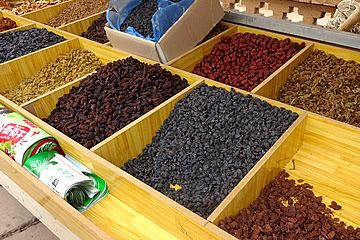

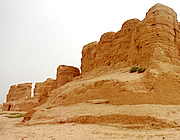
Gaochang is an immensely atmospheric site, the remains of an important Silk Road city, for me one of the highlights of the Turpan area. Nearby, the city's tombs at Astana have some interesting wall paintings and rather chilling mummies.
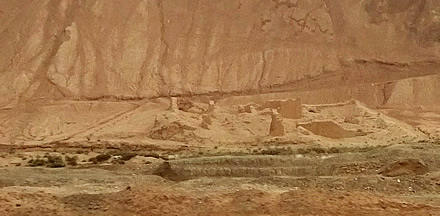
The Flaming Mountains are part of the Tian Shan; composed of red sandstone they glow under certain light conditions.
The day we visited there had been strong winds overnight so there was a lot of dust from the Gobi Desert in the air. Thus the viewing conditions were not perfect, and later in the day would have been better, but we could still see the red colour of the mountains.
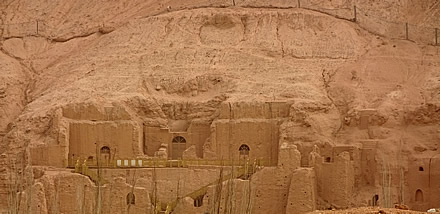
On the way there we had noticed ruined buildings at the base of the mountains, above the course of a river and sealed caves, probably Buddha caves, in the mountainside. There is probably a lot more to be discovered here.
We pulled over into a viewing area to take photographs. The riverside is planted with vines and, as everywhere here, there are lots of latticework grape-drying houses.
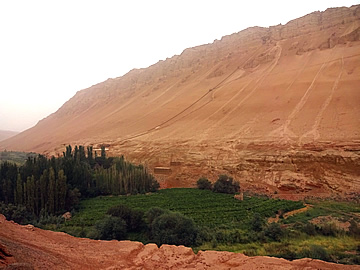
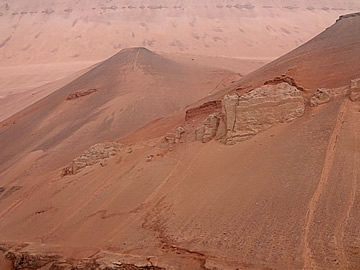

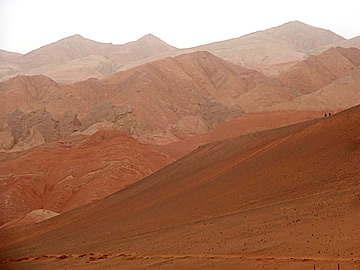
The light was far too poor for good photographs.

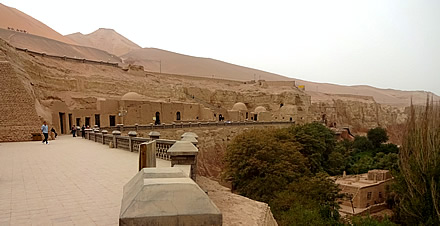
The walls of these thousand year-old caves, 83 of them, were once covered with Buddhist murals. The German archaeologist, Albert von Le Coq, exploring the region in the early years of the twentieth century, investigated the caves, and carted off many fine frescoes, cut from the walls.
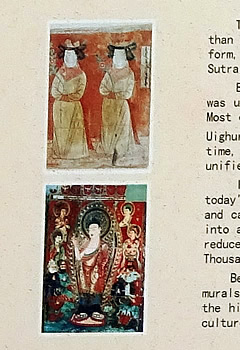
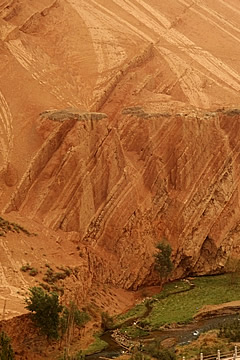
The caves line a narrow terrace high above a river valley on a cliff face, reachable only by stairways. In addition, to preserve security and privacy, a wall obstructed the view of the caves from below or from the opposite mountainside.1 Forgotten for centuries, apart from the goatherds who sheltered in those caves not buried in sand, Le Coq was astounded when his body weight shifted the sand beneath him to reveal murals.1 He lost no time in excavating and removing what he could. Some had been destroyed by smoke from the goatherds' fires, but Le Coq still succeeded in removing a large number to Germany. Nevertheless, many beautiful paintings can still be seen.
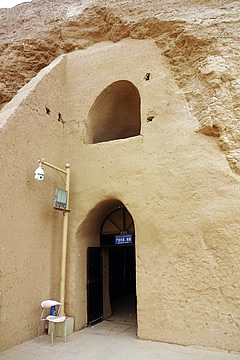
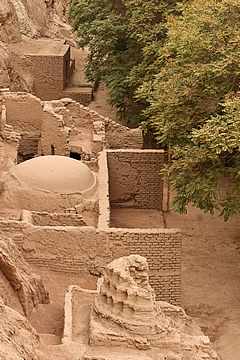
When the Buddhists left - this area became Islamic around the 14th century - many of the paintings were covered with mud, or mutilated, and the caves were used for housing animals. The local people have tried to clean the mud off in places but only succeeded in damaging the painting beneath. There are still a lot of paintings left preserved beneath mud but it would take a great deal of work to clean them up. Gold was used in some paintings and many were damaged when people scraped the gold off.
Photography inside the caves was not allowed.
Most of the existing murals are in the Uyghur style of the Song and Yuan Dynasties, from the 10th to the 14th century.
Two or three of the caves have a "thousand" Buddhas painted on the ceiling - Thousand Buddha Caves generally just means an awful lot of Buddhas.
One cave has a very interesting painting on its end wall opposite the entrance. It shows figures mourning the death of someone important. There are princes from 16 different regions and 8 celestial beings. The facial features and clothing are all different - one of the celestial beings even has tiny tusks. On the side wall there are some crying faces, sad at their loss, and some laughing faces, happy that he had gone to a better life.
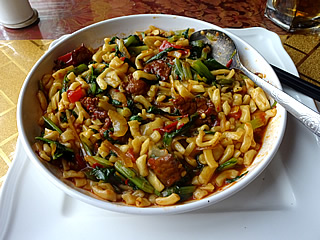
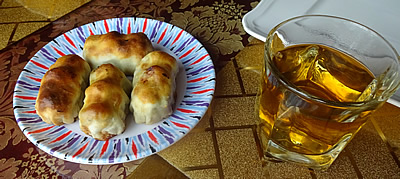
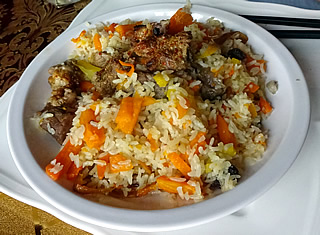
A decent lunch in Turpan before we carried on with our sightseeing: very good samsa with spicy meat, some very spicy noodles, lamb skewers with plov and pickled veg.
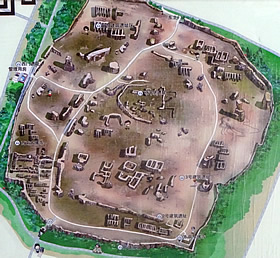
This huge desert oasis city, founded as a garrison town in the 2nd BC, was decimated during the Cultural Revolution when it was flattened to make agricultural land for growing corn. There is still a substantial amount to see, including a palace, temples, and the inner and outer city walls, though these are not complete. The little shuttle buses are essential for getting around the city, it is just too big to do on foot.
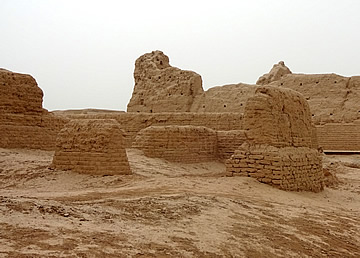
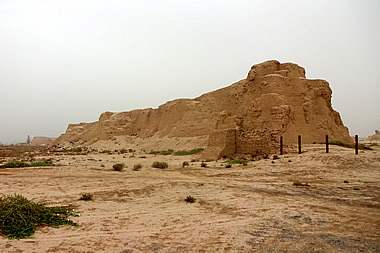
Around 630AD the Buddhist monk Xuanzang stayed here on his way to India. He had been frustrated in his studies to discover true Buddhism and hoped that travelling in India he would have more success. In the 9th century Uyghurs established their Kara-Khoja kingdom here.
The ancient city had a multi-ethnic population of around 30,000 at its height and controlled over twenty other towns.2 As an important Silk Road city it must have been a hugely impressive sight to approaching caravans. The outer city wall was roughly 5km long and 11.5m high and just as thick, made of rammed earth. It enclosed many homes as well as monumental buildings, including a palace in the northern area, and a rectangular inner city wall.

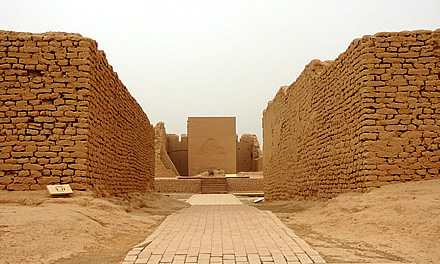
Some of the structures have been restored, though I'm not sure this really adds to the experience. I enjoyed, rather, the feel of a desert city lost in time, especially as the air was full of dust from the Gobi after strong overnight winds. It was very atmospheric.
In the south west of the outer city (inside the outer wall) are the remains of a large Kara-Khoja era Buddhist Temple with a restored domed Prayer Hall. The temple, 130m x 80m, is walled, enclosing a courtyard with buildings on all sides: the central hall in the middle of the west side with smaller halls on its north, west and south sides, the domed Prayer Hall on the north, further halls on the south side of the courtyard.
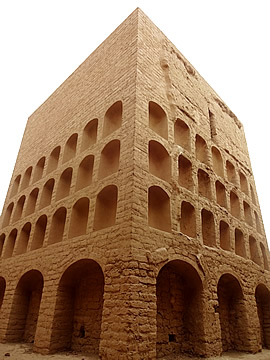
The Central Hall is occupied by a square tower with niches on three sides which probably once contained statues of Buddha - faint remnants of frescoes can be seen in some of the smaller niches.
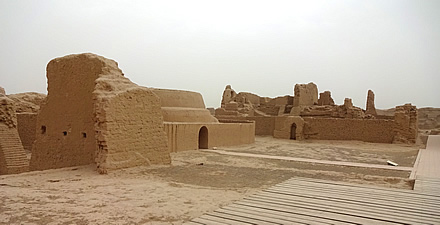
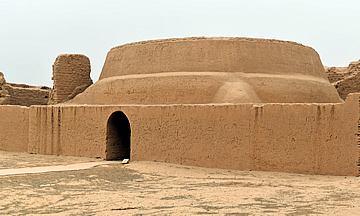
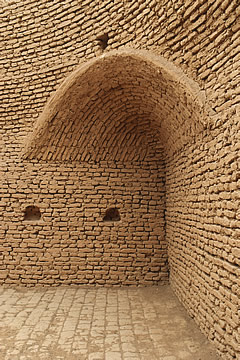
It is said that the monk Xuanzang (602-604AD) would have taught in the Prayer Hall on the north side of the courtyard of the Grand Buddhist Temple. But this does not make sense as the Kara-Khoja Kingdom dates only from the ninth century.
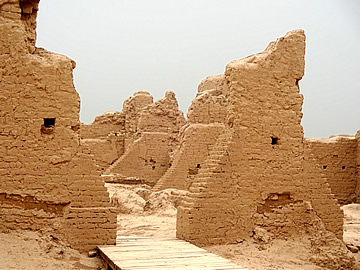
Sher told us that the Silk Road merchants would be lodged in the temples so maybe the halls on the south side of the complex were used for this purpose.

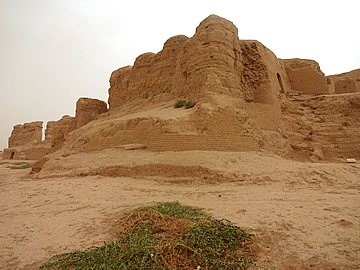
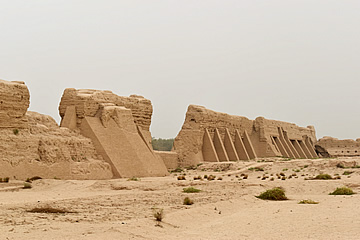
Around the Buddhist Temple are the remains of terraced housing, usually in the form of a narrow north-south rectangle 8-14m long. They can be classified into three types: fully subterranean, semi-subterranean, or walled, with the majority being semi-subterranean. Within the houses traces of ash pits, fireplaces, fire pits, cooking stoves, vent holes, and heatable brick beds have been found.
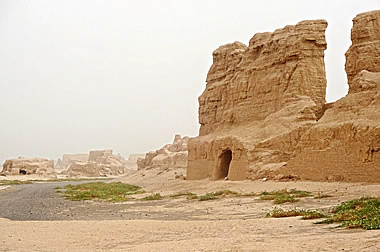
The shuttle bus took us on to the northern side of the site, to the Khan Fort or Imperial Palace. It's a very good service - as long as you don't linger too long the little bus is happy to wait for you.
The palace grounds are roughly 200m x 200m and surrounded by a wall which is still 6-8m high in places. In the northern area of the grounds there is a 15m high rammed earth pagoda-like tower standing on a platform. On its west side palace buildings lie in ruins around a sunken courtyard. To the south was a vast building, the remains of residential dwellings. To the east of the tower is a Buddhist temple in which a stele from the Northern Liang Dynasty was discovered, erected in 445AD to commemorate the founding of the temple. Thus this temple predates the Southwest Grand Buddhist Temple and would probably have been here when Xuanzang stayed in the city.

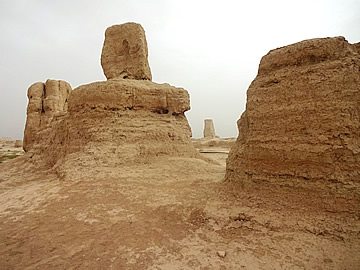
Sher told us that the king was much taken with the monk who was ill when he arrived. He stayed in the city until he recovered and the king supplied him with 40 camels, food and clothing to continue his journey (though in other accounts the king was very reluctant to let him leave) .
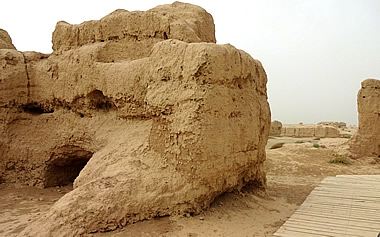

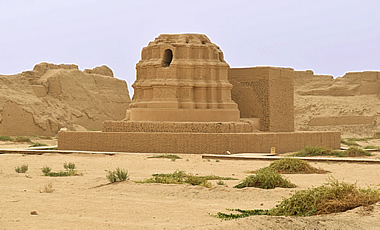
Our final stop was at the Southeast Minor Temple, a beautifully shaped six storey pagoda with a rectangular grotto-like structure on its south side.
The 6.5m pagoda was constructed of rammed earth and adobe and has been dated to the later Uyghur Kara-Khoja Kingdom of the 12th-13th century.
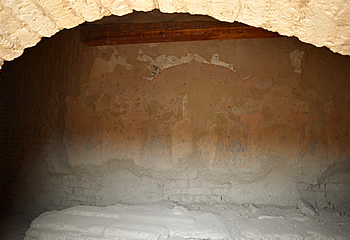
The rectangular grotto-like structure has a vaulted roof with an altar inside and faint remains of frescoes on the walls.
A hugely atmospheric site, as was Jiaohe; somehow these two Silk Road cities, once thriving oases, now subsiding into the desert, are more evocative of the past glories of the trade route than any others I have seen.
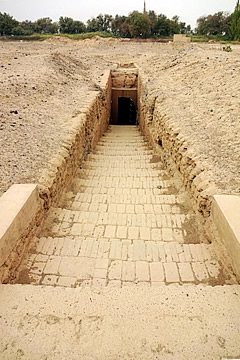
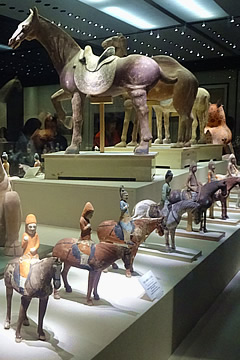
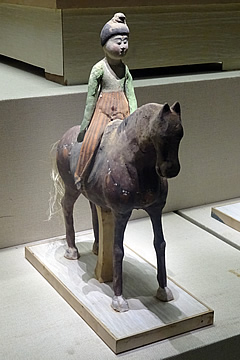
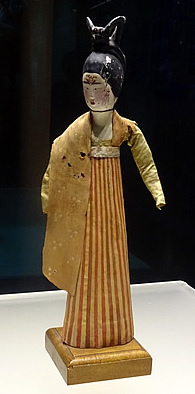 Above: Painted female dancer.
Above: Painted female dancer.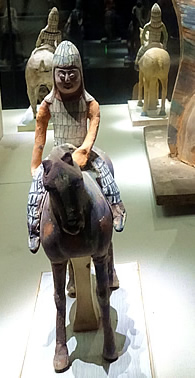
A couple of kilometres north of Gaochang the Astana Tombs were the final resting place of the city's dead for over 500 years. The hot and dry conditions are perfect for preserving many materials, including cloth, paper, clay and wood. Many documents have been found, the earliest dating from 273AD, the latest 778AD. We had already seen in the Xinjiang Regional Museum in Urumqi some wonderful clay and wood models, including fabulous tomb guardians, that have been unearthed here from the Tang Dynasty (618-907AD).
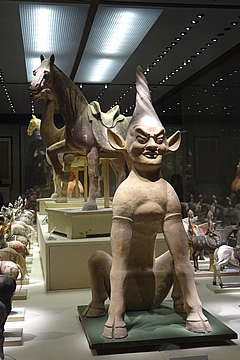
The models include fabulous tomb guardians, horses and camels as well as many small mounted figures.
Over 400 tombs have so far been excavated, but there is a much larger unexcavated area nearby. A guide from the site showed us the three tombs that can be visited, giving information on the paintings etc. No photography was allowed except in the final tomb.
The first tomb we went into has a beautiful series of wall paintings, six adjacent panels, the central four illustrating the four ages of life: jade, golden, stone, and wood. On the left a painting of an upturned bell, on the right a painting with a carpet, jar, grass and silk.
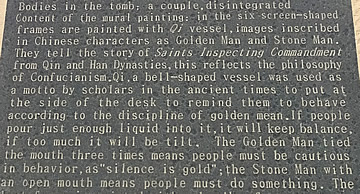
The four ages of life are each represented by a figure. Jade is baby-faced, jade represents cleanliness, the greenish figure is plump and childish. The reddish golden age has a face covered by a cloth and represents young student life, when studying is important, the golden time, reddish clothing, the mask perhaps symbolic of concentration. The bluish stone age is adulthood, the life of work and knowledge which can be passed on. The brownish wood age is the final stage of life, when one needs to be careful and rest a lot!
The grass and jar in the right hand panel caution to think before you act: if you cut a plant it cannot be returned to life but will die, if you toss a coin into a jar it can only be retrieved by smashing the jar. The silk and carpet are a cautionary tale to idle men: if you have no work you should not just lie around and refuse to do something which might be considered women's work; you could have silk worms on a mulberry tree, make silk and weave carpets for instance.
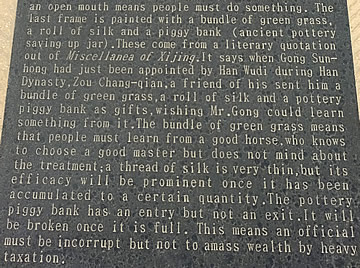
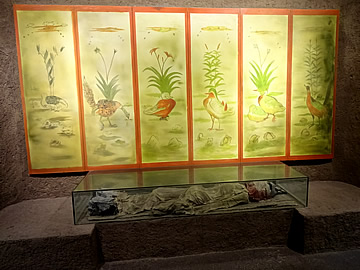
The upturned bell in the left hand panel neither of us understood, something about students choosing a liquid which was poured into the bell which, at some point, tilted. The guide said it was the first computer but we couldn't see it no matter how many questions we asked her!
However, when I looked later at the photograph I had taken of the information at the site, on a stone block at the tomb entrance, the explanations of the paintings were quite different! In particular the bell was "used as a motto by scholars in the ancient times to put at the side of the desk to remind them to behave according to the discipline of golden mean. If people pour just enough liquid into it, it will keep balance, if too much it will be tilt."
We had seen a mummy in poor condition and a replica of the second tomb in the Xinjiang Regional Museum in Urumqi. In fact two mummies were discovered here, described as "a couple, disintegrated" on the information at the tomb.
This tomb has a beautiful series of paintings of birds - all with the same feet, as the artist had never seen the various ducks or pheasants. Behind the birds are flowers including orchids and lilies, and in the background mountains, clouds and flying swallows.
The third tomb had only one low, undecorated chamber which held two Caucasian mummies. The origins of the men are shrouded in mystery, perhaps two travellers from the west. Whoever they were, these two desiccated corpses were very chilling, and I couldn't photograph them. A number of artefacts were found in the tomb, though many tombs have been robbed, including, according to site information, "wood bowls, jars and combs and a handle of a bronze mirror, figurine of clay well, and windlass model, clay figurines, grass figurines, pieces of calabash and linen fabrics, the manuscripts include: Clothing Booklet Buried with a Madam in Tang Dynasty."
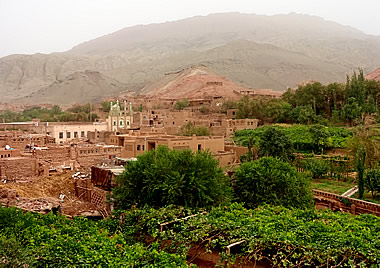
The Uyghur village of Tuyugou, or Tuyoq, is over 2600 years old and still very traditionally Uyghur. There are many houses centuries old, some occupied, some empty. Today 65 households still live in the village, more than 370 people, all Uyghur.
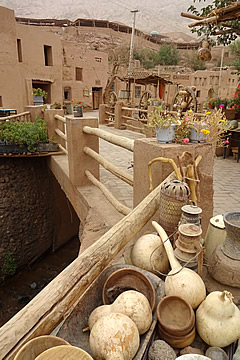
A river here has created a green valley in this dry region on the edge of the Taklamakan Desert.
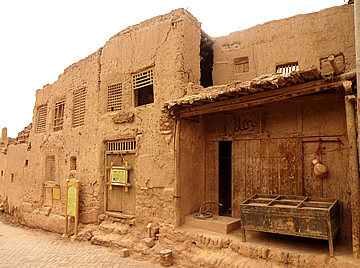
It was very quiet and peaceful, almost deserted, and we wandered right through the village climbing above it to a point where we could see a number of Buddha caves which had been completely denuded of their art by Albert von Le Coq.
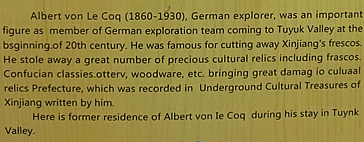
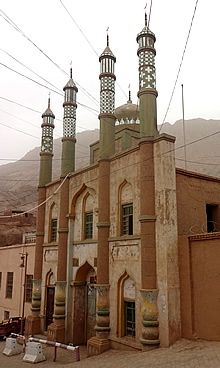
The house Le Coq stayed in can be seen in the village, though the local people believe it to be occupied by an evil spirit and won't go into it.
There is obviously still a lot of bad feeling about the way he stripped the local Buddha caves of their paintings and had them carted off to Germany.
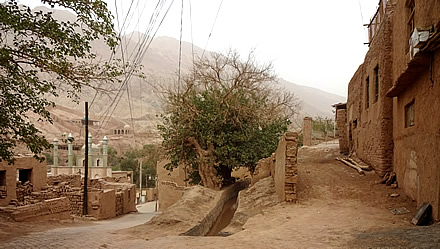
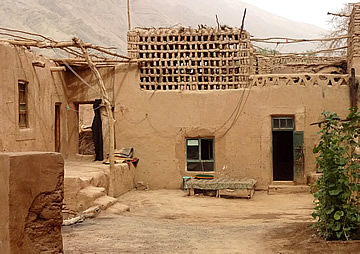
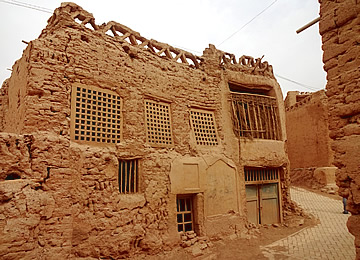 Many buildings look derelict but newer additions, like these latticework windows, show they are still in use.
Many buildings look derelict but newer additions, like these latticework windows, show they are still in use.
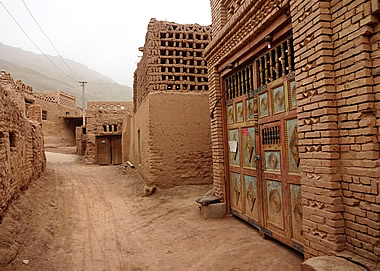
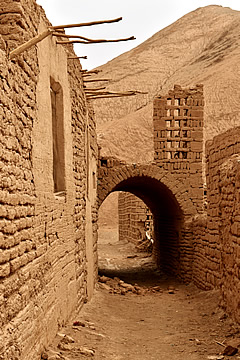
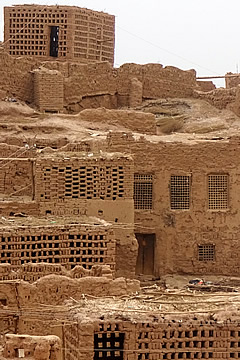
The whole village looks to be built from material dug from the local area, and in the virtually flat light we had when we visited, buildings on the hillsides disappeared into the background!
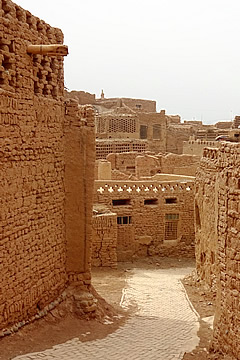
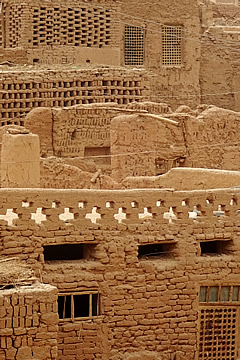
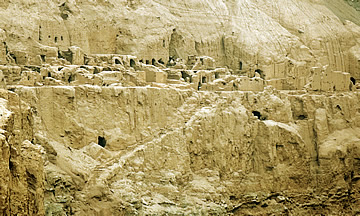
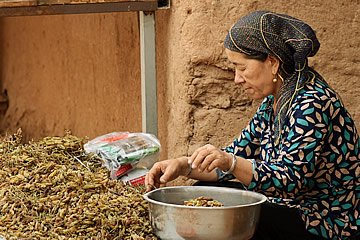
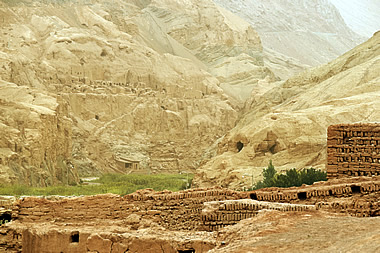
Before we left the village we stopped at a raisin stall and tasted a variety of raisins. They were quite different but we chose one that tasted almost like wine, without question the best raisins we have ever tasted. They were supplies for our train journey the following day to Dunhuang.
